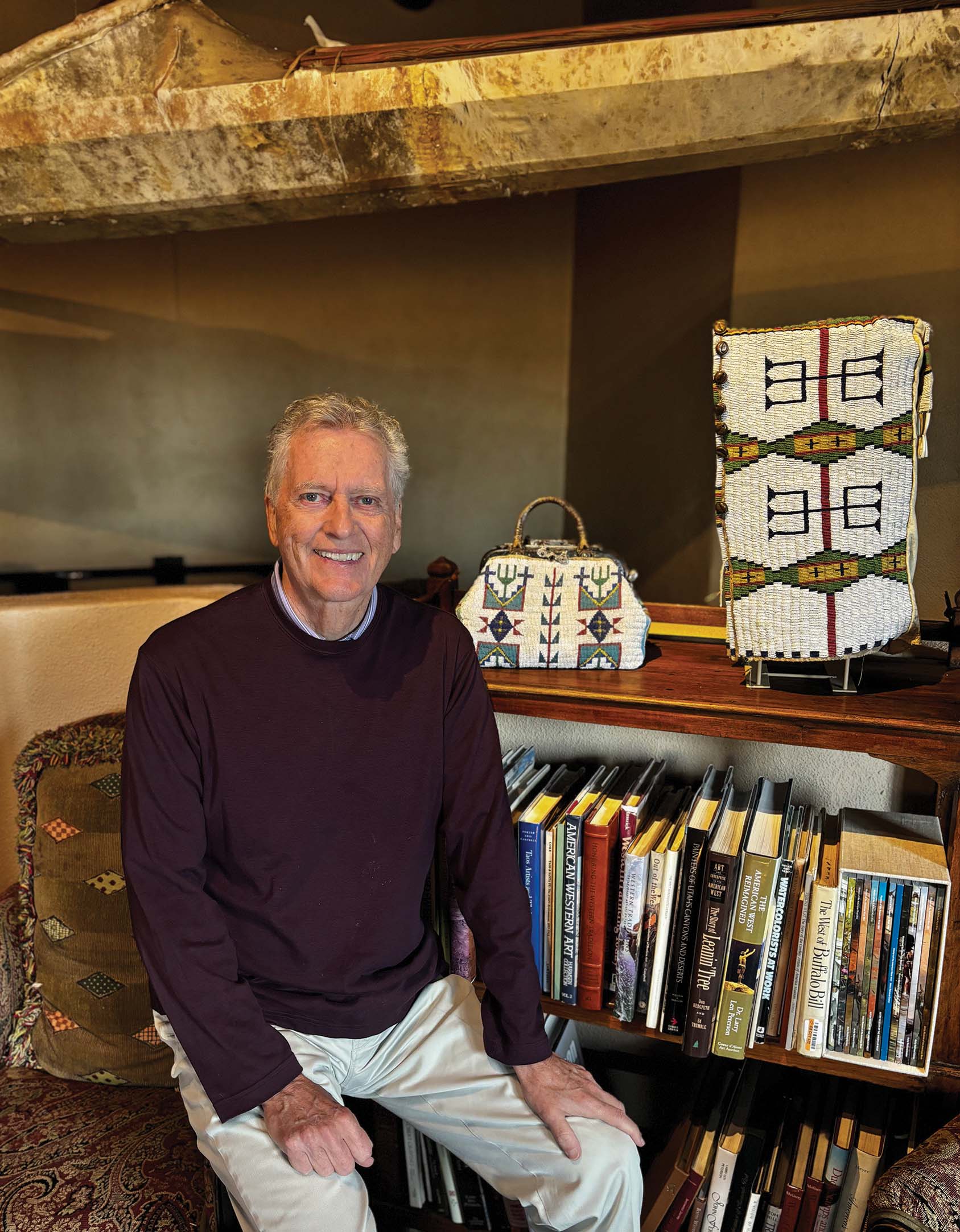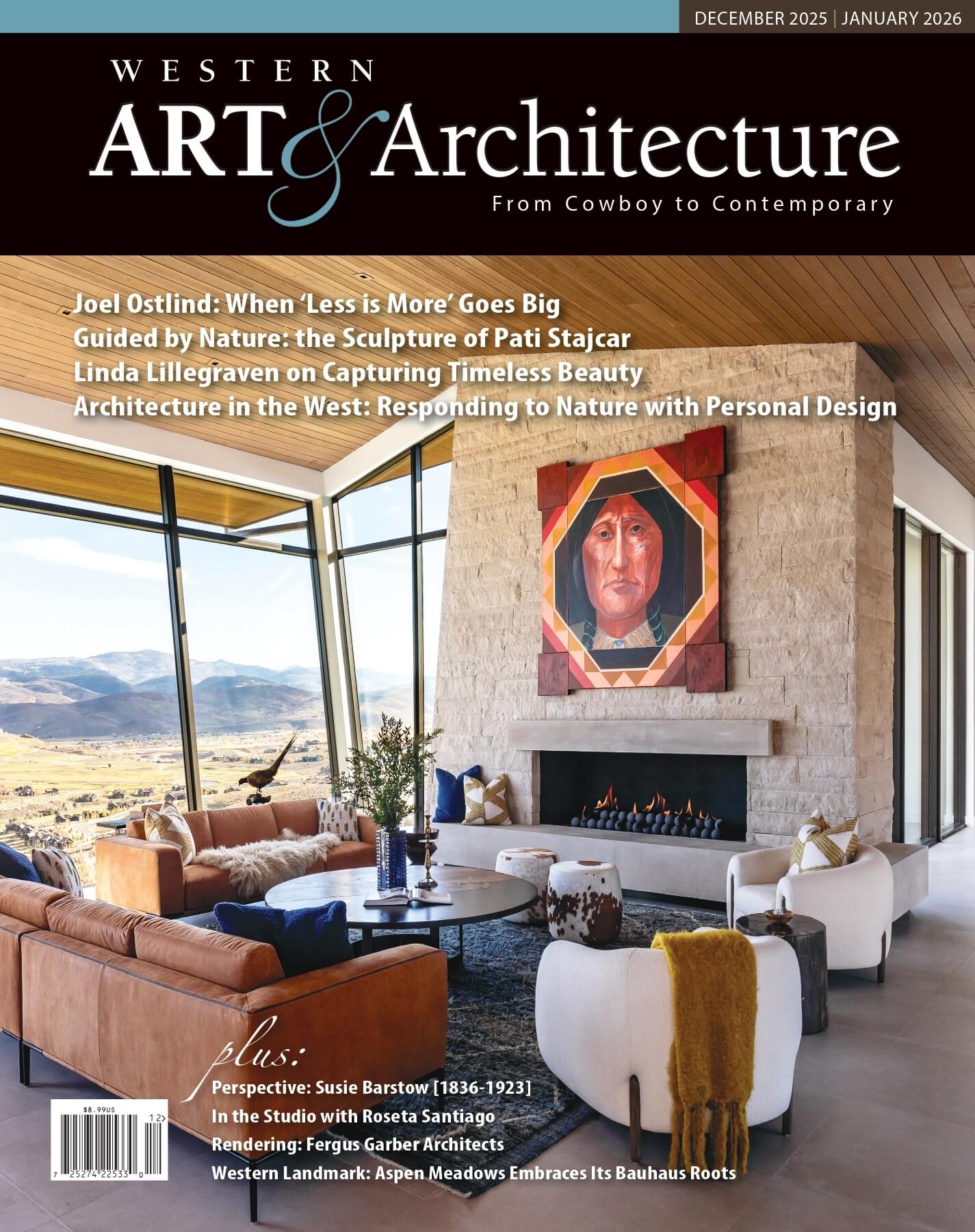
03 Jan COLLECTOR’S EYE: THE ART OF LONGEVITY
While some galleries have come and gone, others have maintained their presence for a substantial time, and Settlers West Galleries in Tucson, Arizona, could be a record-setter. Equipped with master’s degrees in American history and business administration, Stuart Johnson founded the gallery 54 years ago at age 27.
A significant factor in Johnson’s success was that he chose the right artists to represent, including the “Tucson Seven,” made up of artists Harley Brown, Howard Terpning, Ken Riley, Duane Bryers, Tom Hill, Don Crowley, and Bob Kuhn. “They were among the greatest artists of the day who focused on the Western and wildlife genres of painting. It wasn’t hard to get people interested because their work was so good,” Johnson says.
Three annual shows also bolstered the gallery’s success: the Great American West Show, which began in 1977 and features new works by more than 50 artists each November; the American Miniatures Show in February, which began in 1982 as a way for collectors to acquire an artwork by their favorite artist whose larger works might be out of their price range; and a Summer Show each May, which includes artwork by established and up-and-coming artists.
“Each show has a couple of months span. You don’t want to oversaturate your audience with too many shows, but you want to keep up their enthusiasm,” Johnson says.
The gallery’s American Miniatures Show, taking place this year from February 8 through March 1, will feature more than 250 artworks that are 10 by 12 inches or smaller. More than 150 artists are participating.
Johnson takes a direct approach to his business, prioritizing his trustworthiness. “We’ve always been honest with people over the years,” he says. “A lot of dollars are involved in the business, and it’s important for clients to know you’re being straightforward.”
Artist Bill Acheff, an artist represented by Johnson for nearly 50 years, says that Johnson is both smart and easygoing. “He always does right by the artists. By the same token, he expects the artist to give him their best. This has proved to be a successful model for his gallery.”
In addition to Settlers West Galleries, Johnson partnered with fellow art dealers Pete Stremmel and Bob Drummond in 1984 to create the Coeur d’Alene Art Auction, now held in Reno, Nevada. (Mike Overby took Drummond’s place once he retired.) In July 2024, the auction sold more than $17 million of art during their signature event.
“I look back at my time in the art business, and I treasure each moment,” says Johnson. “I have been blessed with Mike Salkowski, who, over 30 years ago, began as a gallery assistant and now runs the operation way better than I. Others have come and gone, but each employee left their mark with kindness and grace. I am deeply grateful to all who have made this journey possible. At the same time, I’m thinking the next painting coming in the door will be the greatest one ever.”
WA&A: What is your art collection’s “origin story”?
Stuart Johnson: When I was a kid, I loved reading books, and I couldn’t get enough of Western movies. My interest in the West was likely piqued by the stories my dad told me of the days when he worked for Buffalo Bill’s Wild West Show, watering his horses for 10 cents a day. Afterward, he’d sneak in and watch Bill ride into the tent, throw eggs into the air, and shoot them. Growing up in Chicago, the Field Museum was a favorite of mine; it exhibited quite a bit of Native American subject matter, including beadwork. Starting when I was 9, I’d find similar materials in antique shops, and it fueled my interest in Western things.
WA&A: Did you diversify your collection over the years?
S.J.: Most of the paintings I have are related to the West, landscapes, and quite a few of Alaska during the time of Sydney Laurence [1865–1940] and Eustace Paul Ziegler [1881–1969]; some were given to me. I would say if you walked through my house, it has a Western flavor. Not that it’s all Native American subject matter, but my paintings relate to the West. Some wonder if I collected the artists I represented, like Howard Terpning, who set a record for selling a piece for more than a million dollars, the first time ever for a living Western artist. He only paints a limited number of paintings each year, so I never tried to compete with my customers, as his sales helped me to survive. I never bought for myself paintings that artists brought me for a show.
WA&A: Was there ever one that got away?
S.J.: There have been quite a few, but there’s not just one I agonized over. Once it’s gone, it’s gone. It’s time to move on to the next one.
WA&A: If you were having a dinner party and wanted a lively conversation about art, who would you invite?
S.J.: Harley Brown — especially if there was a piano. I’ve always said if I had a party and Harley was there, I could go to bed, and he’d entertain everyone.
WA&A: What is your most beloved piece and why?
S.J.: I look a lot at a painting by Sydney Laurence done in 1914 of a trapper with a tent in the snow. It’s a morning scene, and his dog is looking off into the distance. It always catches my eye, and I wonder, ‘What is that dog looking at?’ The painting tells a story, but the viewer can make up the ending. When a painting tells all, there’s hardly a reason to look at it again.
WA&A: What’s one piece of advice you’d offer to a beginning art collector?
S.J.: Before one buys their first painting, I suggest they look at many. Go to galleries, visit museums, and see what catches your eye. Then, focus on paintings and subjects that appeal to you. Don’t buy a painting because a salesperson says it will be worth a lot more in the future. The reason you should buy a painting is that it has meaning for you.
WA&A: Where do you see your collection in 100 years?
S.J.: I hope it will be treasured as a group, not singularly. My daughter likes to keep things together, so I would hope she’d find a home in a museum or other institution. Harold McCracken, art historian and the first director of the Buffalo Bill Center of the West Museum in Cody, Wyoming, once told me, ‘You never really own a painting; you’re just a custodian for a time.’
WA&A senior contributing editor Shari Morrison has been in the business of art for more than 40 years. She helped found the Scottsdale Artists’ School and the American Women Artists and directed the Santa Fe Artists’ Medical Fund for some years.






No Comments